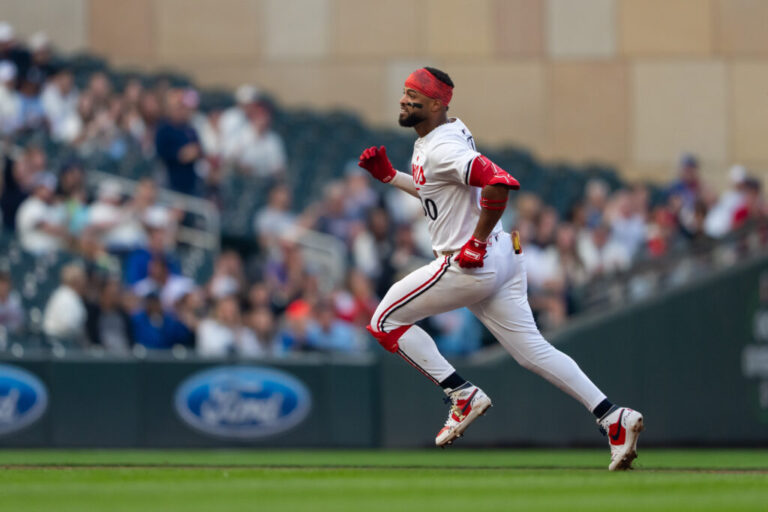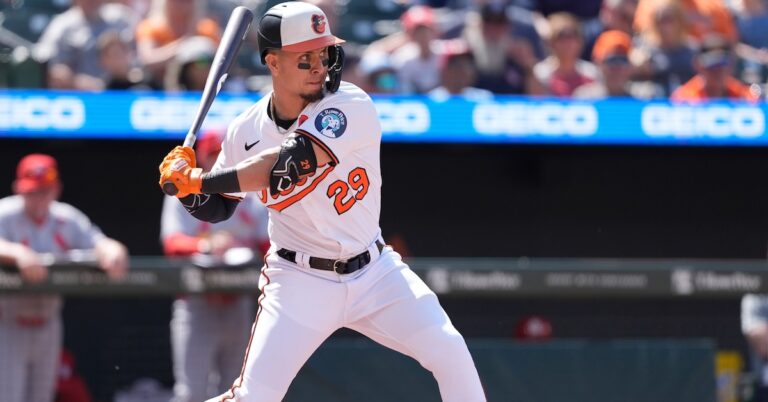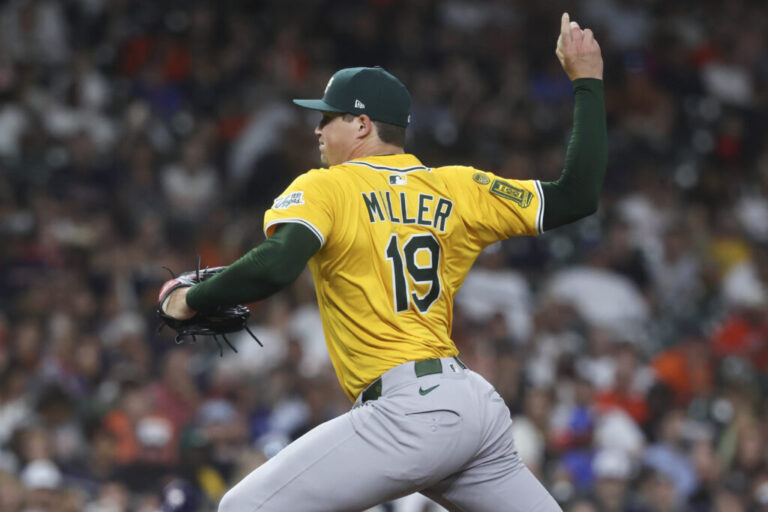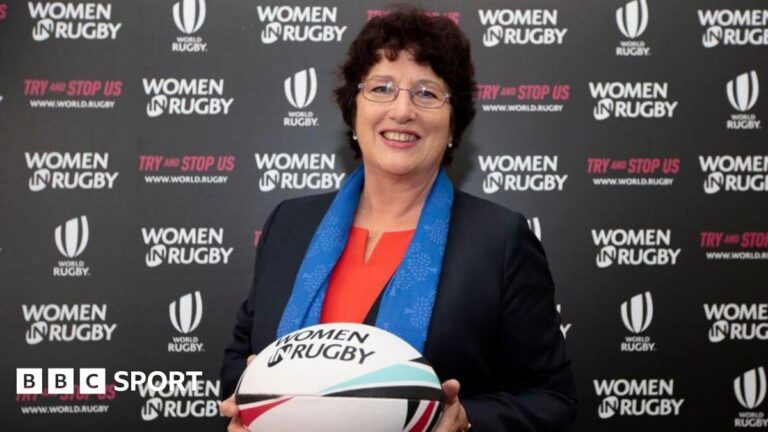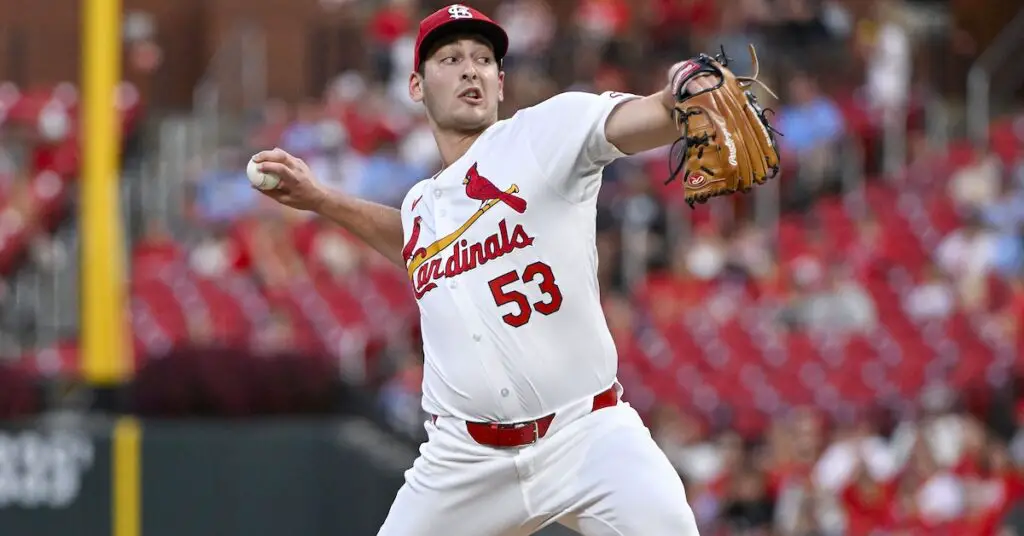

In 2008, the first year of PitchF/X pitch tracking, 13.9% of all pitches across the major leagues were sliders. Ah, those were the days – flat, crushable fastballs as far as the eye could see. More or less every year since then, sliders have proliferated. Don’t believe me? Take a look at the graph:

Are you surprised? Of course not. You’ve seen Blake Snell pitch – and Lance McCullers Jr., Sean Manaea, five of your team’s best relievers, and pretty much anyone in the past half decade. Pitchers are flocking to sliders whenever they can get away with throwing one. It used to be a two-strike offering, then an ahead-in-the-count offering, and now many pitchers would rather throw sliders than fastballs when they desperately need to find the zone. Look at that inexorable march higher.
Only, maybe it’s not so inexorable anymore. Between 2015 and 2023, the average increase in slider rate was 0.9 percentage points year-over-year. The lowest increase was half a percentage point; each of the last three years saw increases of a percentage point or more. But from 2023 to 2024, slider rate stagnated. In 2023, 22.2% of all pitches were sliders. In 2024, that number only climbed to 22.3%, the lowest increase since the upward trend started a decade ago.
That’s hardly evidence of the demise of the slider. For one thing, the number is still going up. For another thing, it’s one year. Finally, 2024 marked the highest rate of sliders thrown in major league history. If I showed you the above graph and told you “look, sliders aren’t cool anymore,” you’d be understandably unmoved.
Not to worry, though. It might be January 9, but I won’t try to pass that off as genuine baseball analysis even in the depths of winter. I’ve got a tiny bit more than that. Raw slider rate is a misleading way of considering how pitcher behavior is changing. There are two ways to increase the league-wide slider rate. First, pitchers could adjust their arsenals to use more sliders and fewer other pitches. Second, the population could change – new, slider-dominant pitchers could replace other hurlers who throw the pitch less frequently.
For example, Adam Wainwright retired after the 2023 season. He threw 1,785 pitches that year, and only five were sliders. Plenty of the innings Wainwright filled for the Cardinals went to Andre Pallante, who graduated from the bullpen to the rotation and made 20 starts in 2024. Pallante actually threw fewer sliders proportionally in 2024 than he did in 2023 – but his pitch count ballooned from 1,139 to 1,978. Similarly, Michael McGreevy made his big league debut in 2024 and threw 311 pitches, 19% of which were sliders.
The numbers can lie to you. Pallante, the only one of our three pitchers to appear in both years, lowered his slider rate. But in 2023, Pallante and Wainwright combined for a 7% slider rate. In 2024, Pallante and McGreevy combined for a 17.1% slider rate. That sounds like a huge change in behavior – but it’s actually just a change in population composition.
The story we all think about isn’t Wainwright retiring and handing his innings to McGreevy and Pallante. It’s Brayan Bello going from 17.5% sliders to 28% sliders while pitching a similar innings load – something that also happened in 2024, just so we’re clear.
To measure how existing pitchers are changing their slider usage, we shouldn’t look at the overall rate. We should instead look at the change in each pitcher’s rate. That’s a truer reflection of the question I’m asking, or at least I think it is. And that answer differs from the chart I showed you up at the top of this article.
There were 315 pitchers who threw at least 50 innings in 2023 and 2024, and threw at least one slider in each of those two years. Of those 315 pitchers, 142 increased their slider usage, 24 kept their usage the same, and 149 decreased the rate at which they threw sliders. The story was similar from 2022 to 2023. There were 216 pitchers who fit the criteria in those years; 90 increased their slider usage, 19 kept theirs the same, and 107 decreased the rate at which they used the pitch. From 2021 to 2022, the effect went the other way; 122 pitchers threw sliders more frequently in 2022 than they did in 2021, 22 kept their usage the same, and 74 decreased their usage.
Put that way, the change is quite striking. The slider craze kicked off in earnest in 2017. From 2016-2017, 114 pitchers increased their slider usage and 89 decreased theirs. That rough split persisted in 2017-2018 and 2018-2019. Everything around the 2020 season is a little weird thanks to the abbreviated schedule, but the basic gist – more pitchers increasing slider usage than decreasing slider usage – was true in every pair of years from 2014-2015 through 2021-2022.
That sounds more like a trend than the overall rate of sliders thrown. Graphically, it looks like this:

Let’s put that in plain English. From 2015, the start of the spike in slider usage, through 2022, there were far more pitchers increasing their slider frequency than decreasing it. On average across those years, 1.3 pitchers threw more sliders for every one pitcher who threw fewer. In the past two years, that trend has reversed; more pitchers are reducing their reliance on sliders than increasing it. The population is going to continue to change – they don’t make a lot of Adam Wainwrights these days – but on a per-pitcher basis, the relentless increase in slider usage has halted.
I tried a few other ways of looking at this phenomenon. I held pitcher workloads constant from year one and applied year two slider rates to each pitcher (pitchers who only threw in year one obviously keep their rate unchanged). The same trend held – the last two years have seen a sharp divergence from the boom times of 2015-2022. I looked at the percentage of starters who started using a slider more than some other pitch in their arsenal and compared it to the ones who de-emphasized it; same deal. I also should note that I’ve grouped sweepers and slurves among the sliders for this article, so this reversal is not about pitchers ditching traditional sliders to get in on the sweeper craze.
No matter how you slice it, we’ve seemingly entered a new phase of pitch design. For a while, most pitchers took a hard look at what they were throwing and decided they needed more sliders. Now, though, it appears that we’ve reached an equilibrium point. Some pitchers still want more. Some think they’re throwing enough, or even a hair too many. Now splitters are on the rise, and hybrid cutters are starting to eat into sliders’ market share.
It’s far too early to say that sliders are on the decline. Factually speaking, they’re not. But to me, at least, it’s clear that the last two years are different than the years before them when it comes to the most ubiquitous out pitch in baseball. Sure, everyone has a slider now – but in the same way that four-seam fastballs were inevitable right until sinkers made a comeback, the slider is no longer expanding its dominance among secondary pitches. An exciting conclusion? I’m not sure. But it’s certainly backed by the evidence.
